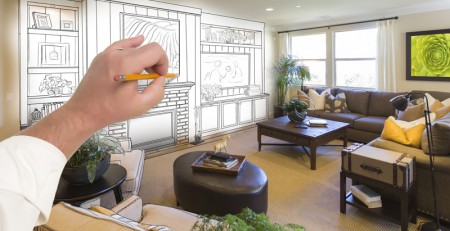Are Window Shutters Having A Revival In Modern Homes?
The use of window shutters dates from as far back as Tudor times in England, which means they were a feature during the reigns of Henry VIII, Edward VII, Mary I and Elizabeth I (1491–1603). Glass was expensive and hard to find, so windows often had glazing on the top half with solid wooden shutters below. Shutter panels were folded inwards against the walls to let in air and light and secured when closed using an internal wooden bar.
The noble history of the humble shutter continued through to the Victorian era, when full glazing began to be more common and thinner walls meant that shutters were moved to the outside of window openings. It is interesting to note that in one form or another, shutters have endured throughout the centuries and are now appearing more and more often in contemporary homes. Are window shutters experiencing a revival in modern homes?
Attributes of contemporary shutters
As in Tudor times, today’s plantation shutters, when combined with glass windows, can let in air and light. In contemporary buildings, light comes in through windows and air enters a room when a window is opened. When internal shutters are fitted, it is possible to adjust the louvres to control how much air and daylight is admitted to a room. When closed, shutters provide complete blackout and offer an added layer of protection against the elements, particularly wind and rain.
What about privacy and security?
Shutters are controlled by the occupants of a building, so it is possible to make full use of them to meet privacy requirements. For example, ground floor rooms might benefit from a two-tier system that allows the top and bottom sections to be opened and closed independently. This calls to mind the combination of glazing and solid shutters in Tudor times, except it is more versatile.
Using shutters on windows undoubtedly improves perceptions of security as they can form a solid layer between or in front of a glazed window and the interior. They provide another barrier that would-be intruders will have to negotiate to gain entry.
Do shutters provide extra insulation?
Any additional layers that are added to the openings in buildings, doors and windows will improve insulation. Quite a lot of heat is lost, for example, through doors and windows and through the roof of a property. Extra layers will affect heat retention and the exclusion of external sound to some degree. In today’s energy-conscious society, this is very welcome as there must be few, if any, people who don’t want to keep heating bills for their home down while minimising noise pollution from outside.
Ongoing maintenance
One of the issues with window treatments is that ongoing maintenance can be quite demanding. Curtains need to be cleaned regularly, which may involve removing them, washing and drying them and rehanging them. Depending on environmental factors in the modern home, such as whether occupants smoke, keep pets or have to contend with a dust mite allergy, this can often turn out to be a very frequent task and therefore quite a burden.
Blinds can create similar issues. Fabric blinds have to be treated as curtains, and Venetian blinds can be extremely fiddly to manage when it comes to wiping them clean at regular intervals if they are made of wood or plastic. Plastic blinds tend to discolour over time if they are exposed to sunlight and may have to be replaced frequently.
Shutters, whether they are louvered or solid, can usually be more easily cleaned, and wooden versions can be stained or repainted infrequently and still retain their good looks.
Are shutters dated or timeless?
There is no indication that shutters have become old-fashioned, as might be expected. In fact, the opposite seems to be true. Their versatility appears to be the secret to their success. In hot places such as Florida and the Mediterranean, they help residents control external light and heat. In cold environments like Alpine ski resorts, they retain heat and block out extreme weather conditions. In contemporary homes, they offer style and elegance in addition to their practical qualities.
Perhaps a bit like the wheel, shutters have endured precisely because they represent a simple but effective way to meet a wide range of different needs. Today shutters are available in many exciting colours and materials, and they are quickly becoming part of every interior designer’s toolkit. They work in traditional and contemporary settings and stand the test of time.










